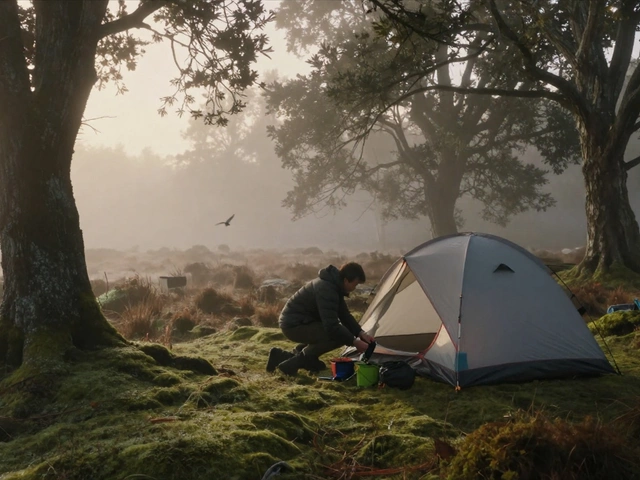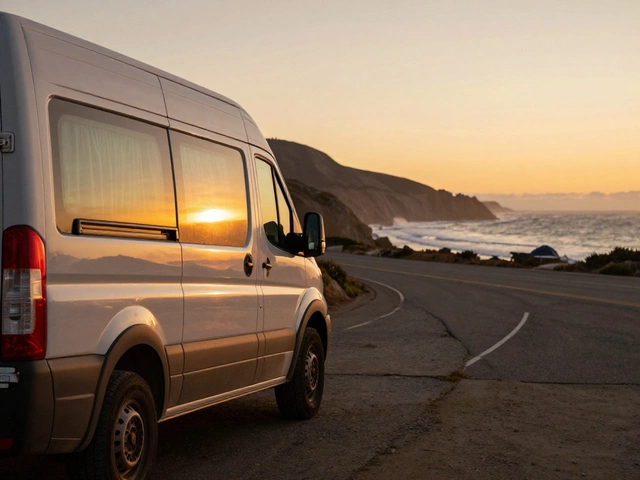Beach Tide Safety Calculator
Tide Safety Calculator
Calculate your safe distance from high tide and verify if your campsite is secure for the night
Safety Result
Ever dreamed of falling asleep to the sound of waves and waking up with a sunrise over the water? Before you grab your sleeping bag and sprint down the shoreline, you need to know whether you can legally put your tent on the beach and how to do it without getting fined or ruining the environment.
Beach tent camping is a form of coastal outdoor recreation where a portable shelter is set up directly on sandy shorelines. It blends the freedom of wild camping with the allure of ocean views, but it comes with a unique set of rules, safety concerns, and gear requirements.
Legal Landscape: When Is a Beach Tent Allowed?
In Australia, the authority to allow or forbid beach camping rests with local councils, state parks, and marine protected areas. A local council the municipal body that manages public lands, including many beaches typically issues permits, sets time limits, and defines which sections of the shoreline are off‑limits.
Here’s a quick rule‑of‑thumb:
- Public beaches managed by councils: Often permit camping for up to 48hours with a simple permit or, in some cases, no permit at all if you’re staying under 24hours.
- National parks: Most Australian national park coasts require a dedicated campsite; setting up a tent on the open beach is usually prohibited.
- Marine protected areas (MPAs): Camping is generally banned to protect nesting turtles and bird colonies.
- Private beaches: You need the landowner’s permission, and many require a fee.
Check the council’s website or call their recreation department before you book. In Sydney, for example, the City of Sydney allows overnight stays at designated beaches like Balmoral with a $10 permit, but bans spontaneous camping at Bondi.
Timing Is Everything: Tides, Weather, and Fire Bans
The ocean is a moving landscape. A spot that’s dry at low tide can be completely underwater by high tide. Use a tide table a schedule showing the times and heights of high and low tides for a specific location to pick a campsite that stays safe for the whole night.
Grab the latest forecast and look out for:
- Strong onshore winds: They can drive sand into your tent and make anchoring nearly impossible.
- Storm warnings: Beaches can become hazardous quickly; a storm surge can raise water levels several metres.
- Fire bans: Many coastal councils enforce total fire bans during summer. A fire ban an official restriction on open flames issued by local authorities means you must rely on camp stoves that don’t produce open flames.

Gear Up: Essentials for a Secure Sand Setup
Standard camping gear often fails on loose sand. Below is a checklist of items that make beach tent camping practical and comfortable.
| Item | Why It Matters | Recommended Specs |
|---|---|---|
| Sand stakes or dead‑men | Prevent the tent from blowing away | 12‑inch aluminum spikes or water‑filled sandbags |
| Ground tarp | Protect the floor from moisture and sand | Rip‑stop nylon, at least 2mm thickness |
| Compact sand anchor | Extra security for windy conditions | Fold‑out steel “spider” anchor, 5lb weight |
| Portable power bank (solar) | Charge lights and phone without generators | 10,000mAh, 10W solar panel |
| LED lantern with dimmer | Low‑impact lighting that respects wildlife | Battery‑operated, 150lumens |
| Reusable water containers | Stay hydrated and reduce plastic waste | Collapsible 2‑liter bottles |
Invest in a tent with a full‑coverage flysheet and a robust pole system. A three‑season dome tent with a waterproof rating of 2000mm works well for most coastal climates.
Setting Up Your Tent on Sand: Step‑by‑Step Guide
- Pick a level spot well above the high‑tide line. Use a stick to probe the sand; a firm, slightly compacted area is ideal.
- Lay the ground tarp oriented so the longest side runs parallel to the water. This keeps moisture away from the tent floor.
- Assemble the tent on the tarp, following the manufacturer’s instructions. Position the door away from the prevailing wind.
- Secure the tent using sand stakes at each corner. If the sand is too loose, bury the stake at a 45° angle and press the sand down firmly.
- Add dead‑men or sand anchors inside the tent for extra hold. Tie the guy lines to the anchors and pull tight.
- Stake the rainfly with additional stakes or tie‑downs to reduce wind uplift.
- Leave a clear path to the water. This helps emergency services and keeps the natural dune line intact.
Respect the Environment: Do’s and Don’ts
Coastal ecosystems are fragile. Your actions can impact nesting birds, sea turtles, and dune vegetation.
- Do use a portable toilet or dig a cathole at least 30cm deep, 20m away from the water.
- Don’t dig a fire pit or leave charcoal ash on the sand.
- Do pack out all rubbish, including biodegradable food waste that can attract pests.
- Don’t disturb dune grasses; they help stabilize the shoreline.
- Do follow any specific wildlife protection signs. In Queensland, for example, you must avoid the sand area where loggerhead turtles nest between November and March.

Quick Checklist Before You Sleep
- Permit confirmed and printed
- Tide table checked - high tide >2hours after you go to sleep
- All gear inspected: stakes, tarp, sand anchors
- Fire ban status verified
- Food stored in airtight containers away from the tent
- Leave‑no‑trace bag packed and ready for the walk‑out
What If You’re Not Allowed to Camp?
If the council says “no,” you still have options. Look for nearby designated beach campsites that offer shaded areas, restroom facilities, and waste disposal. In New South Wales, the Eurobodalla region has several low‑cost beachfront sites that let you experience the surf without breaking any rules.
Alternatively, consider a short‑term surf‑side glamping pod. These tiny cabins sit on a raised platform, providing the same ocean vibe while complying with local regulations.
Frequently Asked Questions
Can I camp on any Australian beach without a permit?
No. Most public beaches are managed by local councils, and many require a permit or have specific designated camping zones. Always check the council’s website or call the recreation office before you set up.
How far inland should I set up my tent to avoid high tide?
A safe rule is to place your tent at least 30meters (100feet) above the highest predicted tide line. Use a tide table for the specific beach and add a margin of 5‑10meters for safety.
What kind of stakes work best on sand?
Aluminum or stainless‑steel spikes that are at least 12inches long work well. For very loose sand, use sandbags, dead‑men, or a collapsible metal “spider” anchor that can be buried horizontally.
Are there any fire restrictions I should know about?
During summer months many coastal councils impose total fire bans to protect vegetation and dunes. Check the local council’s fire danger rating before you travel. If a ban is in place, use a sealed gas stove rather than an open flame.
How can I minimize my impact while beach camping?
Follow the Leave‑No‑Trace principles: pack out everything you bring, avoid trampling dune vegetation, store food securely, and use a portable toilet or dig a proper cathole away from the water.






